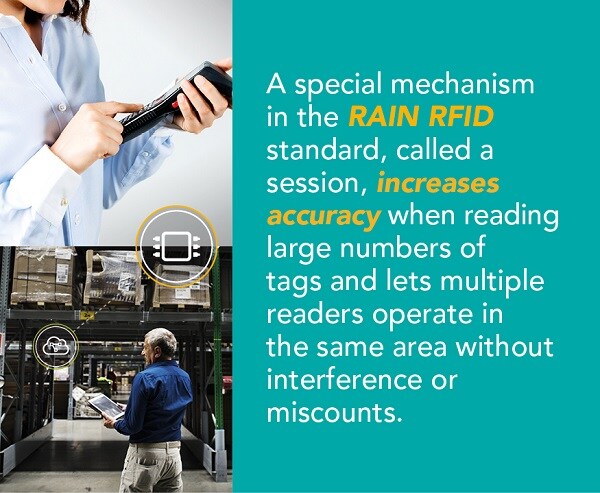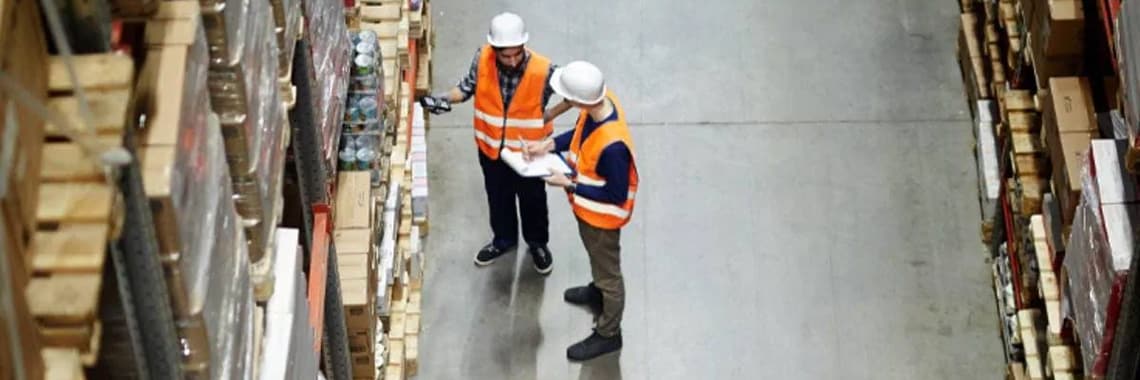Getting an accurate inventory count is one of the most important tasks in an
organization because so many other business functions depend on it. Even small
errors in the count can have a big impact down the line, leading to problems
in purchasing, shipping and receiving, tracking, warehousing, storage,
turnover and reordering. If decisions are made based on faulty inventory
counts, you can create serious issues in supply chain management, production
control, financial flexibility and customer satisfaction.
That’s why many organizations use RAIN RFID technology to know
what’s on hand. Inventory control systems that use RAIN RFID tags to
identify and count items often deliver faster, more accurate results than
those based on methods such as manual counts or bar codes.
RAIN RFID tags are inexpensive to produce and easy to deploy, since they
operate on a global standard that can be used all over the world. The tags
themselves are flexible and suitable for use with a very wide range of items,
ranging from raw materials to finished goods and even livestock. RAIN RFID
tags also make it possible to count large batches of items at once (as many as
1,000 tags can be read per second, without line of sight, with accuracy
ratings in the high nineties). Many deployments achieve accuracy rates
approaching 100% across the solution.
There are, however, a few factors that can affect accuracy. To begin with,
some tags are better than others at responding to reader signals. Variations
in manufacturing quality and antenna design can create tags that are less
sensitive to RF signals, making it harder for the tag to respond to signals
coming from the reader.
The operating environment can have an impact, too. The tag’s
orientation can limit its ability to receive and respond to the
reader’s signal and the reader signal itself, which carries the power
used by the tag to respond, can become too weak to trigger a response if it
passes through material that is too dense before reaching the tag.

Tags that are less sensitive to RF signals, either due to their own
limitations or because of their positioning or environment, may not be able to
power up and respond and as a result may be missed. The good news is that the
RAIN RFID standard includes a special mechanism, called a session, that makes
it easier to deal with these variations in tag strength, especially when tags
are crowded together in large groups, such as when they’re packed into
a container, piled onto a pallet or displayed in a densely populated retail
store.
Crowd Control
 The session mechanism can help prevent stronger tags from repeatedly
overshadowing weaker ones. Once a given tag has reported its identity, by
returning the EPC number to the reader, it goes dormant. The tag stops
responding and consuming the airways so other tags in the group can make their
replies. Stronger tags are likely to respond first, so silencing them once
they’ve responded gives weaker tags a better chance of being heard.
The session mechanism can help prevent stronger tags from repeatedly
overshadowing weaker ones. Once a given tag has reported its identity, by
returning the EPC number to the reader, it goes dormant. The tag stops
responding and consuming the airways so other tags in the group can make their
replies. Stronger tags are likely to respond first, so silencing them once
they’ve responded gives weaker tags a better chance of being heard.
The session mechanism also helps multiple readers operate in the same area
without interfering with one another or interrupting counts. Since so many of
today’s RAIN RFID applications include a mix of portal gateways,
overhead systems and handheld readers, the sessions can help maximise accuracy
in what would otherwise be a difficult environment for achieving accurate
reads.
From a design standpoint, making good use of RAIN RFID sessions is essential
to ensure hardware and software components involved in inventory control can
work together effectively and produce highly accurate results.
Become a Master
Our new white paper, titled “Mastering the Art of Inventory Control”, introduces the session concept.
It explains how RAIN RFID sessions
work, identifies the different type of sessions and gives two real-world
examples (a retail outlet and a supply cabinet) to describe how sessions can
increase accuracy.



 The session mechanism can help prevent stronger tags from repeatedly
overshadowing weaker ones. Once a given tag has reported its identity, by
returning the EPC number to the reader, it goes dormant. The tag stops
responding and consuming the airways so other tags in the group can make their
replies. Stronger tags are likely to respond first, so silencing them once
they’ve responded gives weaker tags a better chance of being heard.
The session mechanism can help prevent stronger tags from repeatedly
overshadowing weaker ones. Once a given tag has reported its identity, by
returning the EPC number to the reader, it goes dormant. The tag stops
responding and consuming the airways so other tags in the group can make their
replies. Stronger tags are likely to respond first, so silencing them once
they’ve responded gives weaker tags a better chance of being heard.


